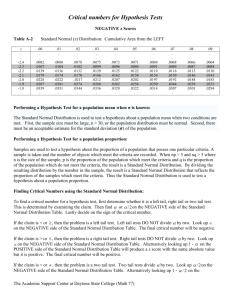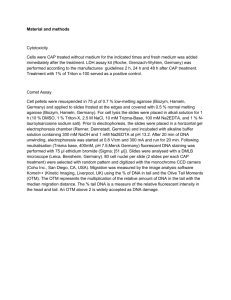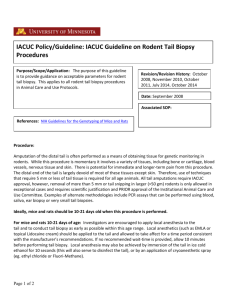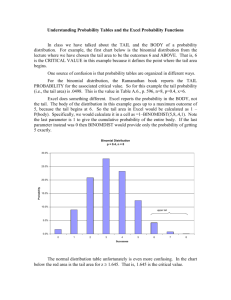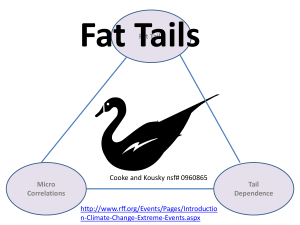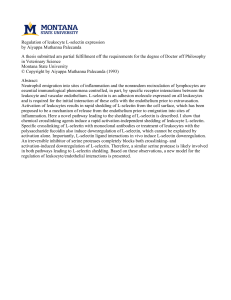final1-summary-report
advertisement
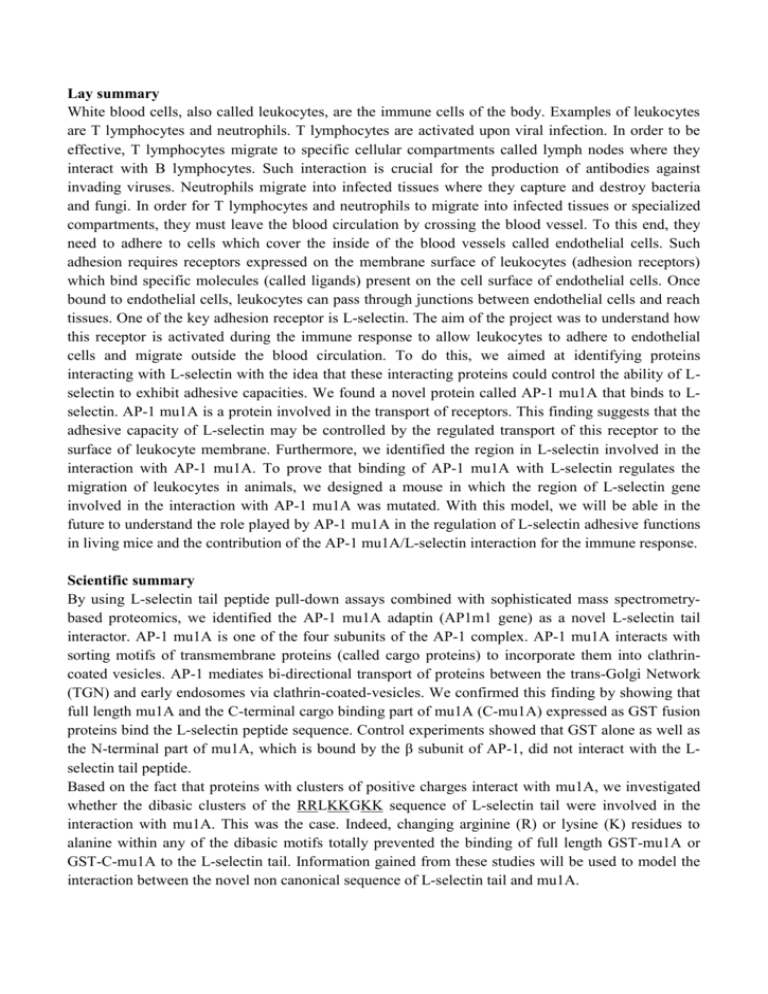
Lay summary White blood cells, also called leukocytes, are the immune cells of the body. Examples of leukocytes are T lymphocytes and neutrophils. T lymphocytes are activated upon viral infection. In order to be effective, T lymphocytes migrate to specific cellular compartments called lymph nodes where they interact with B lymphocytes. Such interaction is crucial for the production of antibodies against invading viruses. Neutrophils migrate into infected tissues where they capture and destroy bacteria and fungi. In order for T lymphocytes and neutrophils to migrate into infected tissues or specialized compartments, they must leave the blood circulation by crossing the blood vessel. To this end, they need to adhere to cells which cover the inside of the blood vessels called endothelial cells. Such adhesion requires receptors expressed on the membrane surface of leukocytes (adhesion receptors) which bind specific molecules (called ligands) present on the cell surface of endothelial cells. Once bound to endothelial cells, leukocytes can pass through junctions between endothelial cells and reach tissues. One of the key adhesion receptor is L-selectin. The aim of the project was to understand how this receptor is activated during the immune response to allow leukocytes to adhere to endothelial cells and migrate outside the blood circulation. To do this, we aimed at identifying proteins interacting with L-selectin with the idea that these interacting proteins could control the ability of Lselectin to exhibit adhesive capacities. We found a novel protein called AP-1 mu1A that binds to Lselectin. AP-1 mu1A is a protein involved in the transport of receptors. This finding suggests that the adhesive capacity of L-selectin may be controlled by the regulated transport of this receptor to the surface of leukocyte membrane. Furthermore, we identified the region in L-selectin involved in the interaction with AP-1 mu1A. To prove that binding of AP-1 mu1A with L-selectin regulates the migration of leukocytes in animals, we designed a mouse in which the region of L-selectin gene involved in the interaction with AP-1 mu1A was mutated. With this model, we will be able in the future to understand the role played by AP-1 mu1A in the regulation of L-selectin adhesive functions in living mice and the contribution of the AP-1 mu1A/L-selectin interaction for the immune response. Scientific summary By using L-selectin tail peptide pull-down assays combined with sophisticated mass spectrometrybased proteomics, we identified the AP-1 mu1A adaptin (AP1m1 gene) as a novel L-selectin tail interactor. AP-1 mu1A is one of the four subunits of the AP-1 complex. AP-1 mu1A interacts with sorting motifs of transmembrane proteins (called cargo proteins) to incorporate them into clathrincoated vesicles. AP-1 mediates bi-directional transport of proteins between the trans-Golgi Network (TGN) and early endosomes via clathrin-coated-vesicles. We confirmed this finding by showing that full length mu1A and the C-terminal cargo binding part of mu1A (C-mu1A) expressed as GST fusion proteins bind the L-selectin peptide sequence. Control experiments showed that GST alone as well as the N-terminal part of mu1A, which is bound by the β subunit of AP-1, did not interact with the Lselectin tail peptide. Based on the fact that proteins with clusters of positive charges interact with mu1A, we investigated whether the dibasic clusters of the RRLKKGKK sequence of L-selectin tail were involved in the interaction with mu1A. This was the case. Indeed, changing arginine (R) or lysine (K) residues to alanine within any of the dibasic motifs totally prevented the binding of full length GST-mu1A or GST-C-mu1A to the L-selectin tail. Information gained from these studies will be used to model the interaction between the novel non canonical sequence of L-selectin tail and mu1A. Serine 364 of L-selectin tail is phosphorylated in activated leukocytes. It is thought that such covalent modification modulates the interaction between L-selectin tail and binding partners and thereby adhesive functions of the receptor. Next, we investigated whether serine phosphorylation of Lselectin tail influences the binding of mu1A. We showed that GST-mu1A or GST-C-mu1A do not bind the L-selectin tail peptide in which serine 364 is phosphorylated. A similar result was found when serine 364 was replaced by aspartic acid, an acidic amino-acid to imitate a constitutively phosphorylated residue. Our results suggest that L-selectin tail is phosphorylated in endosomes or TGN by a clathrin-associated kinase. Such phosphorylation may regulate L-selectin accumulation in endosomes and localization of clustered receptor on the tips of microvilli on the plasma membrane. To unambiguously prove this, we designed a mouse harbouring a non-phosphorylatable serine-toalanine knock-In (KI) substitution at position serine 364 of the L-selectin tail (KI S364A mouse). The analysis of L-selectin trafficking and localization as well as L-selectin-dependent rolling in leukocytes from the KI S364A mouse will reveal the crucial role played by the dynamic phosphorylation of L-selectin tail for in vivo leukocyte migration. Significance of the research project and potential impact: There is a lack of knowledge on the mechanisms by which L-selectin regulates leukocyte adhesion and migration. Our discovery of the AP-1 mu1A-adaptin as a novel interactor of the L-selectin tail is of significant importance. First, it suggests that surface expression of L-selectin is not only regulated by proteolytic cleavage in the plasma membrane, but also by the regulation of its intracellular trafficking. Thus, L-selectin trafficking may control replenishment of the L-selectin pool on the plasma membrane surface upon proteolytic cleavage. Second, regulated L-selectin trafficking may explain how L-selectin clusters are formed on the tips of microvilli to allow leukocyte rolling along the endothelium. Third, L-selectin trafficking may be dynamically regulated through phosphorylation of L-selectin tail in endosomes and/or the TGN. Our discovery will have an impact on the comprehension of L-selectin function Conclusions and socio-economic impacts of the project: The main objectives of the proposal were reached. The Fellow identified a novel protein interacting with L-selectin cytoplasmic tail and designed a L-selectin KI S364A mouse. Advanced skills in Molecular Biology, Biochemistry and Proteomics-based mass spectrometry were transferred to Queen’s University of Belfast through extensive training of the Fellow at the Max Planck Institute of Biochemistry. Thus, new and modern technology platforms can be developed in a UK-based university. The L-selectin KI S364A mouse model will be transferred to Queen’s University of Belfast where this promising study will be further developed with the goal of generating publications of excellent scientific standard. The Fellow is currently seeking for funding from UK-based research grant bodies (BBSRC and Wellcome Trust) to pursue this work. Clearly, the preliminary data generated at the Max Planck Institute of Biochemistry including the design of the L-selectin KI S364A mouse model will be crucial for the success of grant applications. This means that new post-Doctoral Fellows and Ph.D students will be employed to Queen’s University Belfast to carry out this work thus bringing economic wealth to Northern Ireland. The research is fundamental and will be relevant to the Academic society, but on the long term, this knowledge could be exploited in Research and Development to design novel anti-inflammatory compounds directed against Kinases which phosphorylate L-selectin tail or proteins interacting with L-selectin tail.




